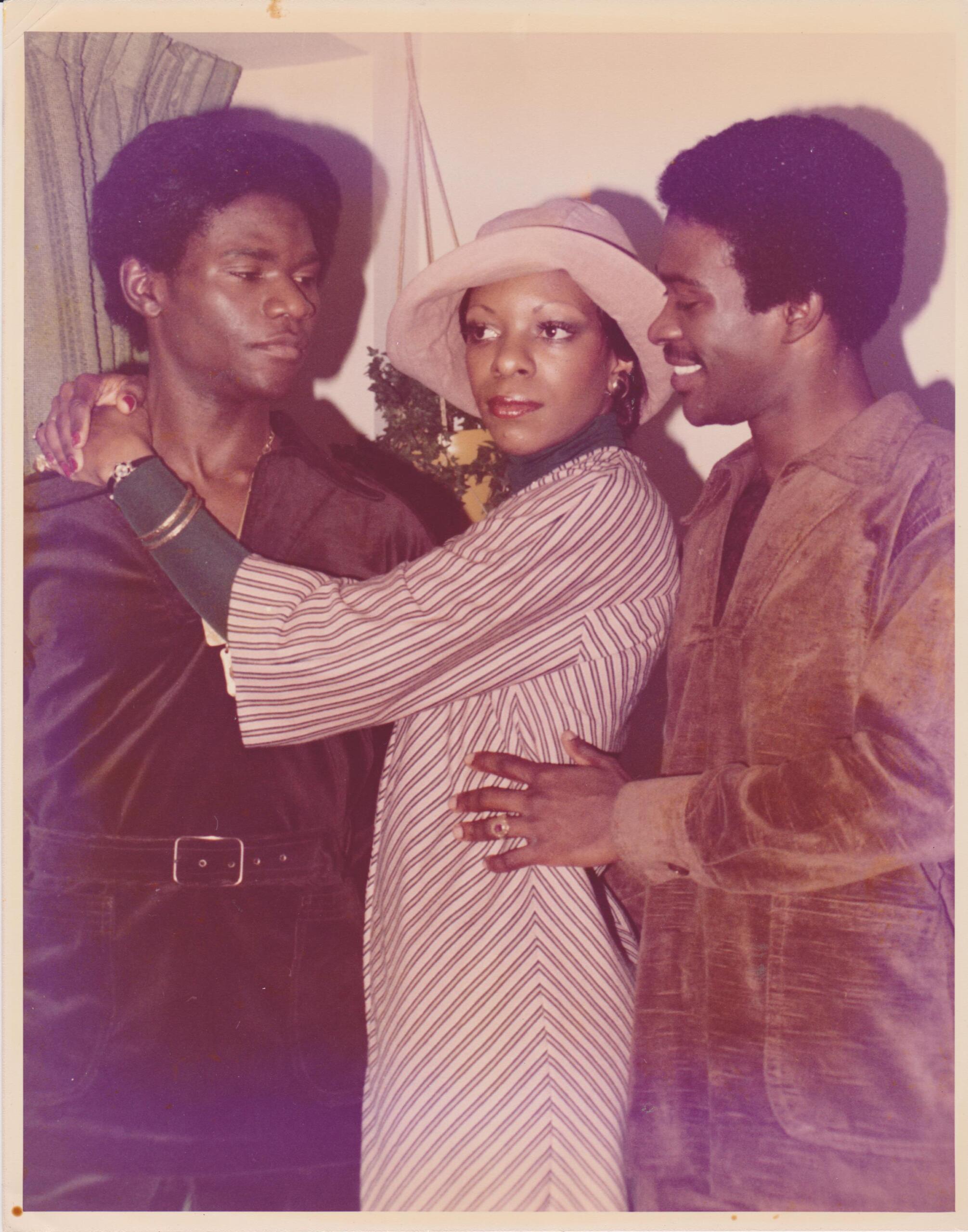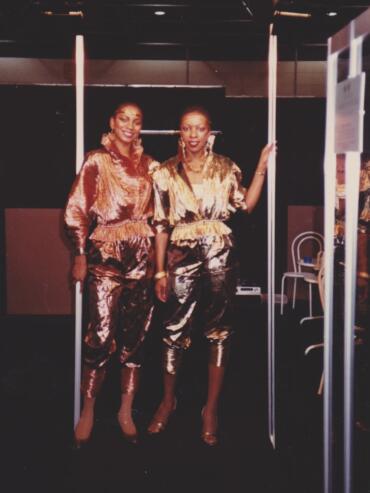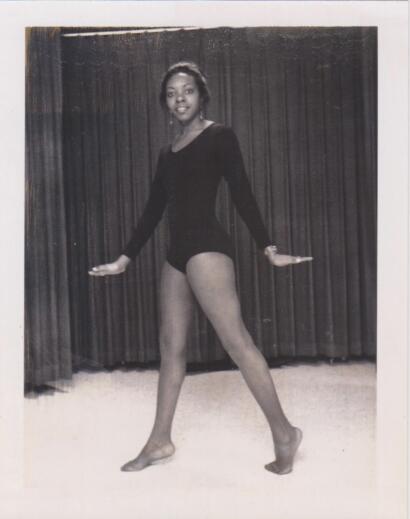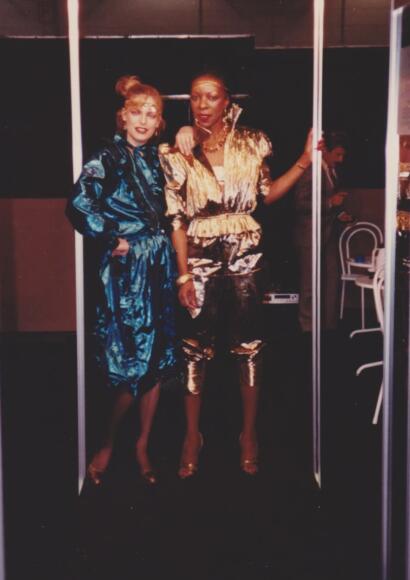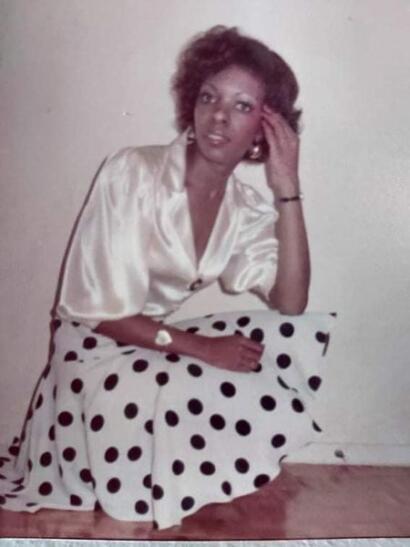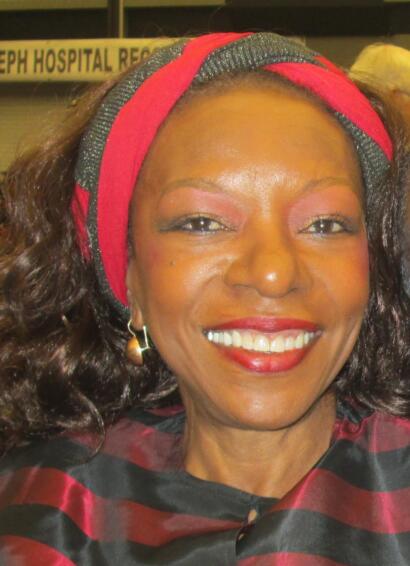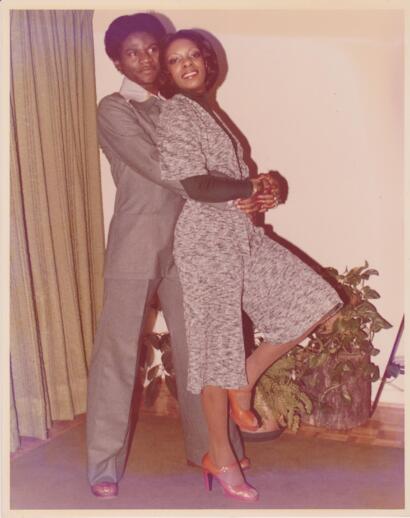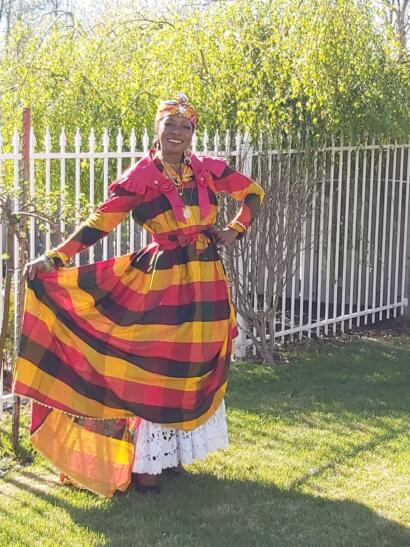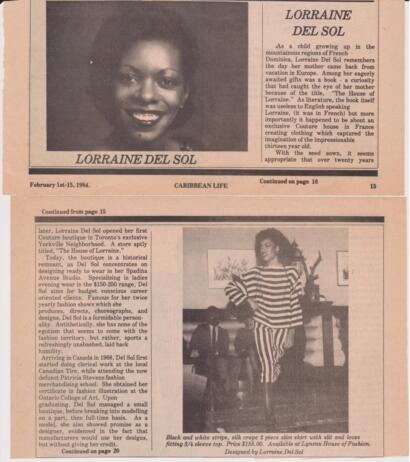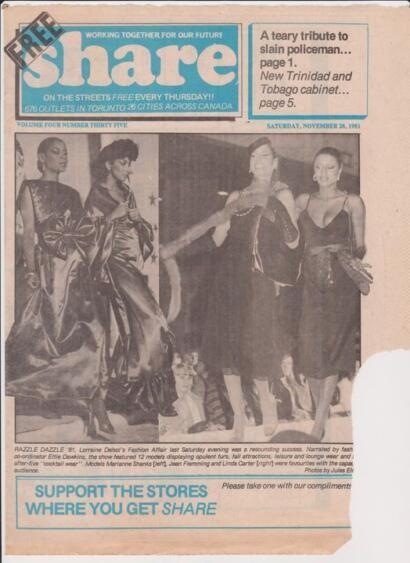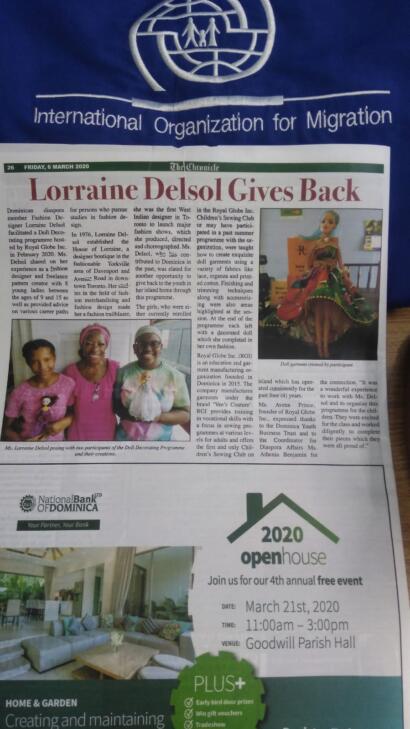June 2023
Month 20xx
Danielle Reid & Lauryn Kovacs
Charmaine Gooden
Joining the Zoom call, we hear roosters crowing and see Lorraine Delsol sitting at her dining room table in her Dominican home. She has a bright, beaming smile on her face. Her love of the culture often brings her home and this time Delsol’s returning for the Creole festival.“I’m proud of my homeland and having grown up in this vibrant culture,” she says. “It’s where my dreams of becoming a fashion designer were born.”
Early Life and Career
Raised in Grand Bay, Dominica by her mother, a school principal and father, a policeman who became a fireman, she had a strict upbringing. “No nonsense, school and back,” says Delsol. With her four sisters and two brothers, she attended Convent High School, one of Dominica’s top schools.
Her influences were a mix of British, French and Creole. A special time of year for her was around October, when Dominicans would celebrate Creole time and independence. “We’re huge on culture,” Delsol explains.
With her mother also being a dressmaker, Delsol became skilled at designing clothes. “I wanted a dress for a school dance and my mother didn’t have time to make it, so I did,” she tells us. Realizing she had an eye for fashion, Delsol spent a lot of time sewing, telling us that by high school she became the go-to person who made dresses for friends, who’d often come Fridays after school with fabric. She’s never looked back.
Once when Delsol was 15, her mother, who was in Paris, bought a book called House of Lorraine. “She didn’t speak or read French,” Delsol explains. “I studied French in high school, so when I read the book, I learned it was about a Parisian fashion house. I decided when I grew up and had a business, that’s what I’ll name it,” she says.


To pursue her dream of becoming a fashion designer, Delsol quit high school and began teaching, earning enough money to move to Canada. She arrived in 1968, getting a job within days. After work, she’d go the Spadina garment district and walk into all the manufacturers, asking for a job.
“One time,” she shares, “the owner of the factory looked me up and down, saying, ‘you don’t belong on the machines.’” She was given a job as an invoice clerk and began watching how the garment industry worked.
Delsol began studying Fashion Merchandising at Patricia Stevens Career College in 1971 and later studied Fashion Sketching and Pattern Drafting at Ryerson University, as well as Fashion Illustration at the Ontario College of Art. By 1976, while still studying Fashion Merchandising, she was ready to start her business.
Starting in merchandising gave her a wealth of fashion industry knowledge. This led to modelling, which she did even after she opened her first store, House of Lorraine. She developed her eye for style by watching what stars were wearing.
Delsol says that while in school, she had the big idea to open a boutique. “I quit my job, kept studying and as soon as I could find a little space to rent, I opened up my boutique. It was a very little place on Avenue Road just north of Davenport,” she recalls.
“I knew the hardest part would be going to the bank, so I didn’t even bother, because I knew the answer for a loan would be no,” says Delsol. She worked hard, got business and clients and kept going.
This special section creates a spread of 2 photos that will jut out into the side margin.

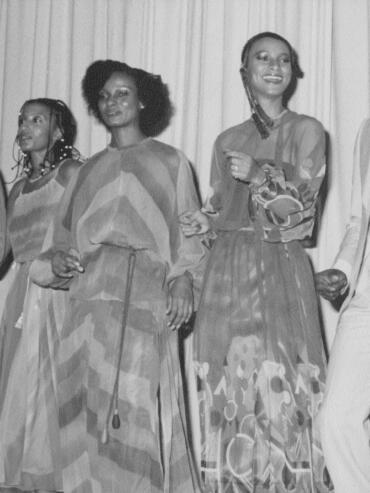
Breaking Barriers
After finally opening her boutique, Delsol began putting on fashion shows to display her designs. Her first show started in the boutique and moved onto the sidewalk. “We stopped traffic with everyone wanting to see what was happening,” she says laughing. That got the media’s attention and she was on the front page of the Toronto Star, on CBC and was introduced by CHUM Radio’s Jeanne Beker.
At these shows she became good friends with others in the industry. One was the model Jennifer Shaw. “I met Lorraine years ago when she was designing and I’ve done many shows for her. We’ve become very good friends,” says Shaw.
She recalls that back then, there were no other Black designers here doing what she was, and Shaw remembers that as Delsol started to be recognized, popular clubs asked her to host shows at their venues. “Shortly after the CN Tower opened, she held one of her best there,” recalls Shaw.“It was impressive as many people had not yet visited Toronto’s newest attraction. Lorraine got a lot of new clients,” she adds.
As a Black model, Delsol faced some discrimination and noted the difficulty finding work, especially in mainstream fashion’s Eurocentric beauty standards.”Something was always wrong,” she says. “Your lips were too big, your butt was too big.” She recalls the subtle attempts of makeup artists to pencil in their lips to be smaller.
Historically, Black women have been ridiculed and devalued for their physical features and have fought hard to break down barriers and deconstruct stereotypes. Black models such as Joan Smalls have spoken out about being denied opportunities based on her race and having hair that was difficult to work with.
“It was easier to get modelling assignments in Germany,” explains Delsol. “They went for more exotic looks, I guess. When business was slow in September, I’d close the store and model in Germany. Then I’d come home with fabric for a December fashion show and enough money for rent.”
Delsol and her fellow Black models paved the way for many female Black models and as a designer, she hired them to showcase her pieces, giving them a chance to work and display their talent.
Shaw recalls that when she modelled, resilience as a Black person was important, as it wasn’t common, in those days, to call out injustice in the industry. “We didn’t talk about colour or blame this or that,” she explains. “It was just when one door closes, you try the other door.”
Influence and Legacy
In 2011 Delsol and a friend co-founded Madame Wob Dwiyet Canada Incorporated (MWDCI), an organization that showcases Dominican culture to Canadian audiences “for the love of Creole,” says Delsol. “We hold a show once yearly and performed at Caribbean Carnival in Belleville,” says Delsol, adding “MWDC also performed at the 2015 Toronto Pan American (PanAM) games.”
During their elaborate performances, dancers wear the traditional Wob Dwiyet (Robe Douillet), a Creole cultural dress characterized by wide hoop skirts and bright patterns, which are a major staple in Dominican history. DelSol explains that the dresses are a combination of three separate cultures. “You have the stateliness of the British, the chic of the French and the flamboyance of the African,” she says.
Delsol was the first West Indian to launch major fashion shows in Toronto, which she directed, produced and choreographed herself. “No other Black person had done so, so the shows were very successful [and] were covered by all the major newspapers,” she says. They were held at venues such as the CN Tower, Sutton Place Hotel, Westin Harbour Castle Hotel, Hilton and top night clubs around the city.” This resulted in her designs being featured in renowned publications such as the Toronto Star, the Globe and Mail, Share and Caribbean Life.
Delsol and her fellow Black models paved the way for many female Black models and as a designer, she hired them to showcase her pieces, giving them a chance to work and display their talent.
Delsol reflects on defining moments in her early career. “The day I opened my store on Avenue Road was one of my proudest moments,” she recalls. “I remember sitting at my desk at the end of the day, I stretched my legs on the desk and felt elated.”
Today she designs for her boutique, House of Lorraine and is active in fashion, especially in the Caribbean community. The boutique specializes in wedding and prom dresses and are noted for cultural headpieces and costumes inspired by Delsol’s Caribbean heritage. She strives to create trustful relationships with clients, ensuring they get quality clothing. “I also have a relationship with my community,” she says, “and give back by volunteering at the Cotillion Ball-Edge youth program and talking to high school students on career days.”
DeSol has used her position as a Black designer to lift up other designers, models and members of her community in Canada and abroad.
About the authors:
Over the years Prof. Gooden has built a multi-media career as an editor, writer, presenter, public relations consultant and special event manager, spokesperson, host, and educator. She...
Read MoreOver the years Prof. Gooden has built a multi-media career as an editor, writer, presenter, public relations consultant and special event manager, spokesperson, host, and educator. She...
Read MoreAbout the author:
Over the years Prof. Gooden has built a multi-media career as an editor, writer, presenter, public relations consultant and special event manager, spokesperson, host, and educator. She...
Read More

